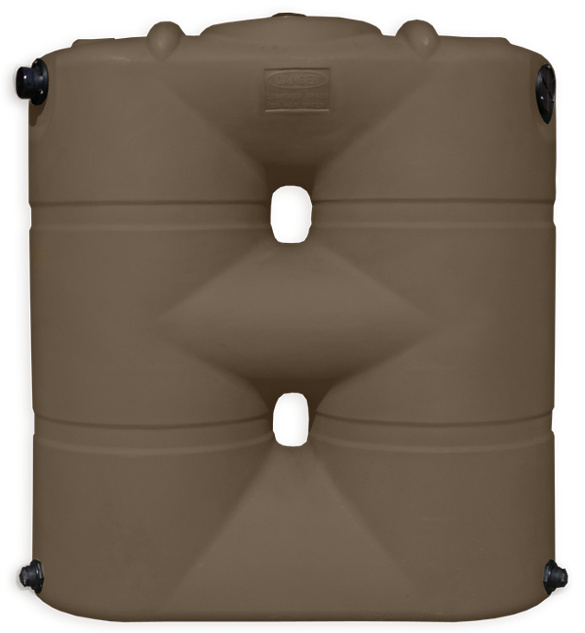Slimline Water Tanks: Stylish and Practical for Modern Houses
Slimline Water Tanks: Stylish and Practical for Modern Houses
Blog Article
Exploring the Various Usages of Rainwater Tanks for Residential and Commercial Characteristics
As the worldwide focus on sustainable living methods remains to intensify, the use of rainwater containers in both household and commercial settings has actually become a relevant option. These containers supply a tank for rainwater harvesting, presenting a myriad of possible applications that extend much past mere storage space. From watering to bathroom flushing and landscape design, the adaptability of rainwater tanks is vast. Their assimilation right into business residential properties opens up a realm of opportunities for environmentally aware organizations. The complex uses rain containers offer an engaging case for their adoption, not just as a useful water-saving measure however also as a testimony to accountable resource monitoring.
Advantages of Using Rain Containers
Using rainwater storage tanks provides various benefits for both homes and neighborhoods in terms of water conservation and sustainability. One of the key benefits of using rainwater containers is the significant reduction in reliance on keys supply of water - Slimline water tanks. By catching and saving rainwater for later usage, individuals and neighborhoods can lower their demand for treated water, ultimately easing the problem on water therapy centers and decreasing energy usage connected with water transport and treatment
In addition, rain harvesting via containers gives a reputable alternate water resource during times of water constraints or scarcities. This saved rain can be utilized for different non-potable objectives such as watering, purging toilets, and cleaning clothes, decreasing the pressure on typical water sources. Furthermore, making use of rainwater storage tanks can cause set you back savings for both households and neighborhoods by decreasing water expenses and decreasing the demand for pricey facilities expansions to satisfy expanding water needs.
Essentially, the utilization of rain storage tanks supplies a sustainable and ecologically friendly method to water monitoring, profiting both specific users and the more comprehensive community in terms of water preservation, cost-efficiency, and durability.
Rainwater Tank Use in Irrigation
Offered the benefits of rainwater containers in saving water resources and minimizing reliance on mains water supply, a significant application hinges on utilizing stored rain for irrigation functions - Slimline water tanks. Rainwater gathering systems can properly accumulate and save rain, supplying a lasting water source for sprinkling gardens, yards, and agricultural fields. By utilizing rainwater for irrigation, property owners can minimize their dependence on treated water resources, resulting in set you back financial savings and ecological benefits

Among the main benefits of making use of rainwater for irrigation is its purity. Rainwater is normally soft and without the chemicals and ingredients frequently found in keys water, making it suitable for beneficial plants without the threat of hazardous results. In addition, rain is at ambient temperature, which can benefit plant development by avoiding temperature shocks that can accompany cool mains water.
Rain Storage Tanks for Bathroom Flushing

Executing rainwater tanks for commode flushing is a cost-efficient and environmentally friendly practice that can be quickly integrated into both property and commercial residential or commercial properties. The saved rain can be utilized to flush bathrooms by linking the tank to the existing plumbing system. This straightforward yet effective solution can substantially reduce water usage in a building, especially in areas where water shortage is a concern.

Integrating Rainwater Tanks in Landscape Design
These storage tanks can record and store rain overflow from roofings, which can then be made use of for sprinkling yards, lawns, and plants. By using rainwater for irrigation objectives, residential or commercial property owners can decrease their reliance on community water resources, leading to cost savings and conservation of valuable water sources.
In addition to offering a lasting water resource for landscape design needs, rainwater containers can also assist in taking care of stormwater overflow. By click for more recording rain that would otherwise flow right into tornado drains pipes, these tanks can alleviate erosion, lower flooding risks, and protect against air pollution of all-natural water bodies. Including rainwater storage tanks in landscape design can add to the overall aesthetic charm of the residential or commercial property, showcasing a commitment to environmental stewardship.
Industrial Applications of Rain Tanks
Utilizing rain storage tanks in industrial settings supplies a lasting option for water administration and conservation, profiting companies and the atmosphere alike. Industrial applications of rainwater containers vary and progressively prominent due to the price financial savings and environmental advantages they provide. One vital commercial usage is for watering functions, where gathered rain can be made use of to water landscape design, gardens, and agricultural fields bordering commercial residential or commercial properties. This can cause considerable look at these guys decreases in water bills and reliance on municipal water resources.
Additionally, rainwater gathered in storage tanks can be treated and utilized for non-potable functions within commercial residential or commercial properties, such as flushing toilets, cleansing, and cooling systems. In general, the unification of rain storage tanks in industrial settings presents a functional and environmentally responsible technique to water administration.
Verdict
To conclude, rainwater storage tanks use numerous benefits for both household and commercial residential properties. From watering to toilet flushing and landscaping, making use of rain containers can help conserve water sources and decrease water expenses. In addition, incorporating rain tanks in commercial settings can result in considerable expense financial savings and ecological advantages. Generally, the convenience and sustainability of rainwater tanks make them a beneficial financial investment for any residential or commercial property proprietor aiming to boost water performance.
Report this page